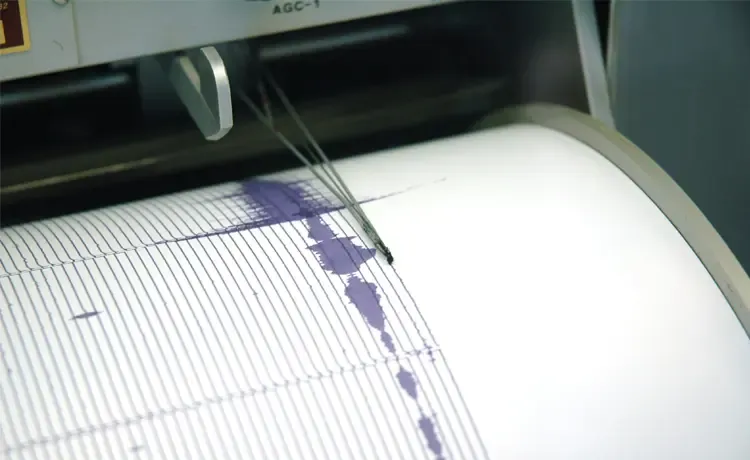Earthquakes can happen at any time of the day, month or year. There’s usually no warning, so it's best to get prepared now.
4 Things You Should Know About Earthquakes
- All 50 states and all U.S. territories are vulnerable to earthquakes. The most damaging ones happen in California, but most of the large ones are in Alaska.
- Ground shaking from earthquakes can collapse buildings and bridges; disrupt gas, electric and phone services; and sometimes trigger landslides, avalanches, flash floods, tsunamis and fires.
- Smaller earthquakes often follow the main shock.
- Most earthquake-related injuries are caused by collapsing walls, broken glass and falling objects.
Earthquake FAQ
Q: How do I prepare for an earthquake?
A: Make a plan and practice it with your family so everyone knows what to do. Basic services may be cut off for days or even weeks after a disaster, so it’s vital to build an emergency supplies kit that includes enough food and water for at least three days so your family can cope on its own. Visit ready.gov for more about earthquakes.
Q: What if I have functional needs?
A: When you’re making your plan and building your kit, anticipate any special needs such as transport to an emergency shelter or what to do about medical equipment that needs electricity if there’s a power outage. Learn more at ready.gov.
Q: What if I have pets?
A: Your plan and emergency supply kit should include your pets and their needs. If you have to evacuate, don’t leave your pets behind: Find out ahead of time if local emergency shelters for people will allow pets and if not, research out-of-area options such as friends and relatives, boarding facilities and pet-friendly hotels. Get more pet information.
Q: What should I do during an earthquake?
A: There are three simple actions to remember when the shaking starts. Practice with your family ahead of time!
- Drop to the ground on your hands and knees. This will protect you from falling but will still allow you to move, if necessary.
- Cover your head and neck by getting under sturdy furniture (e.g., table or desk) or by using your arms if there is no shelter nearby.
- Hold on to your shelter until the shaking stops.
Q: What if I’m in a wheelchair?
A: When the shaking starts:
- Move to an inside corner of the room, away from windows and anything that could fall on you.
- Lock the wheels, bend over and use your arms or a pillow to cover your head and neck.
- Hold on until the shaking stops.
If your community holds earthquake drills, such as the International ShakeOut Day every October, be sure to participate. Check out ShakeOut.org.
Q: What should I do after an earthquake?
A: First, check yourself and family members for injury.
- If you’re in a damaged building, get out and quickly move away from it.
- If you’re trapped, send a text or bang on a pipe or wall. Cover your mouth for protection and instead of shouting, use a whistle.
Q: What should I do about going back into my house?
A: First walk carefully around the outside and check for loose power lines, gas leaks, roof damage and structural damage (e.g., foundation and chimney cracks). If in doubt, have your residence inspected by a qualified building inspector or structural engineer before entering. When you go inside, here are some things to look out for:
- Natural gas leaks
- Sparks
- Broken or frayed wires
- Damage to water and sewage systems
- Basement flooding
- Spills of household chemicals
- Damage to your appliances
- Spoiled or contaminated food and supplies
Returning home can be both physically and mentally challenging. Keep a manageable schedule and make sure you and your family members get any necessary emotional support or help with stress management.
For more information on security and preparedness products, browse the QuickSeries® library of guides, including Earthquake Preparedness and Picking Up the Pieces: A Disaster Recovery Guide.
